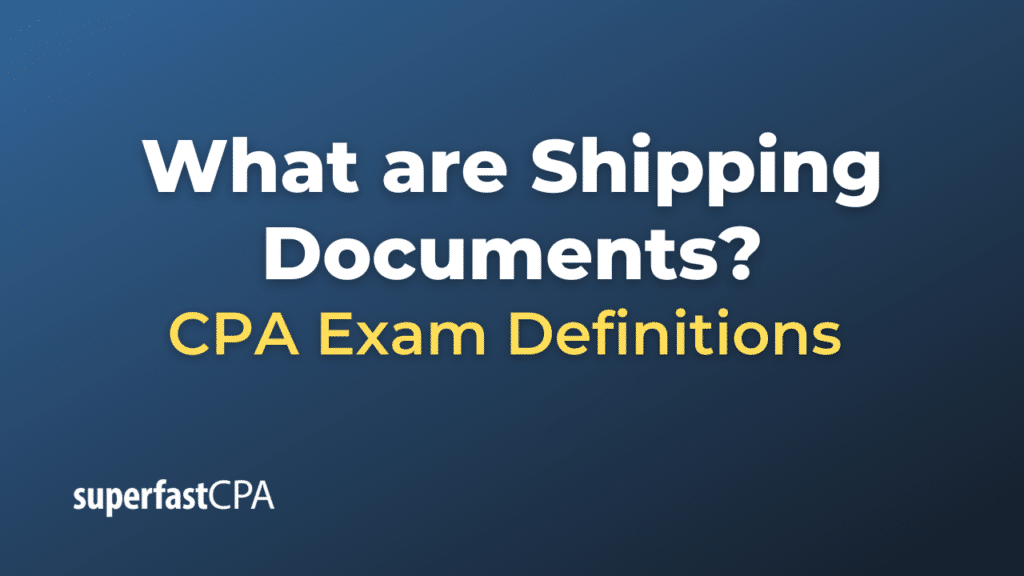Shipping Documents
Shipping documents are essential papers used in the transport of goods, both domestically and internationally. These documents provide vital information about the shipment, such as the nature of the goods, their quantity, destination, sender, receiver, transport method, and other specifics. Shipping documents play a crucial role in ensuring smooth transportation, regulatory compliance, customs clearance, and proper delivery.
Here are some of the most common shipping documents:
- Bill of Lading (B/L): This is a contract between the owner of the goods and the carrier. For sea shipments, it serves as a document of title, a contract of carriage, and a receipt for goods.
- Air Waybill (AWB): Similar to a bill of lading but used for air shipments. It’s a contract between the shipper and the airline and is not negotiable, unlike the B/L.
- Commercial Invoice: A detailed bill for the goods from the seller to the buyer. It provides information about the buyer and seller, a detailed list of goods shipped, their value, and the terms of the sale.
- Packing List: Specifies the details of the package, including type, quantity, and description of the goods, the shipment’s total weight and volume, and any marks or numbers used to identify the packages.
- Certificate of Origin: Confirms the country where the goods were manufactured. This document can be required for customs clearance, as some countries have trade agreements that offer reduced tariffs for products coming from specific origins.
- Insurance Certificate: Proves that insurance covers the goods being transported.
- Shipper’s Export Declaration (SED): Required for shipments that exceed certain values. It provides information about the sender and receiver, value of the goods, and the Harmonized System (HS) code.
- Inspection Certificate: Some buyers or countries may require this, showing that goods were inspected prior their shipment and met specified criteria.
- Dangerous Goods Declaration: Required if the shipment contains hazardous materials. It provides information on the nature of the danger the goods might pose.
- Proforma Invoice: Sent by the seller to the buyer in advance of the shipment or delivery of goods. It gives a close estimate of the transaction’s expected costs.
- Consular Invoice: Used in some countries; it needs to be purchased from the consulate of the country to which goods are being shipped.
- Dock/Warehouse Receipt: A document used to confirm the receipt of goods at a dock or warehouse.
- ATA Carnet: A special customs document that allows duty-free and tax-free temporary import of goods for up to one year.
Example of Shipping Documents
Let’s illustrate the use of shipping documents through a fictional scenario involving an exporter and an importer.
GreenBean Co., a coffee producer located in Brazil, has closed a deal to export a batch of premium roasted coffee beans to CafeBlend Ltd., a coffee shop chain located in France.
1. Commercial Invoice: Before the shipment, GreenBean Co. prepares a commercial invoice detailing:
- Seller: GreenBean Co., Brazil
- Buyer: CafeBlend Ltd., France
- Description of Goods: Premium Roasted Coffee Beans
- Quantity: 1000 kg
- Total Cost: $5,000
2. Packing List: Alongside the commercial invoice, GreenBean Co. also prepares a packing list specifying:
- 20 cartons containing 50 kg of coffee each
- Each carton’s dimensions and individual weight
- Marks or numbers for identification
3. Bill of Lading: The shipping company, upon loading the coffee onto the ship, issues a Bill of Lading to GreenBean Co., confirming the receipt of 1000 kg of coffee for transport to France.
4. Certificate of Origin: Since France and Brazil have a trade agreement in place, CafeBlend Ltd. requests a Certificate of Origin to potentially benefit from reduced tariffs. GreenBean Co. obtains this document certifying that the coffee originates from Brazil.
5. Insurance Certificate: To safeguard against potential damage or loss during transit, GreenBean Co. insures the shipment. The insurance company provides an insurance certificate detailing the coverage amount and terms.
6. Shipper’s Export Declaration: Due to the shipment’s value, GreenBean Co. fills out a Shipper’s Export Declaration, declaring the export of goods worth $5,000 to France.
Upon the shipment’s arrival in France, CafeBlend Ltd. uses these shipping documents to:
- Verify the shipment’s contents against the commercial invoice and packing list.
- Clear customs, using the Bill of Lading, Certificate of Origin, and other relevant documents.
- Ensure the shipment’s integrity and, if any damage occurred, refer to the insurance certificate to make a claim.
Without these shipping documents, CafeBlend Ltd. might face challenges or delays in receiving and processing the coffee shipment, highlighting the critical role these documents play in international trade.
This example underscores the significance of shipping documents in ensuring a seamless trade transaction between an exporter and an importer.













